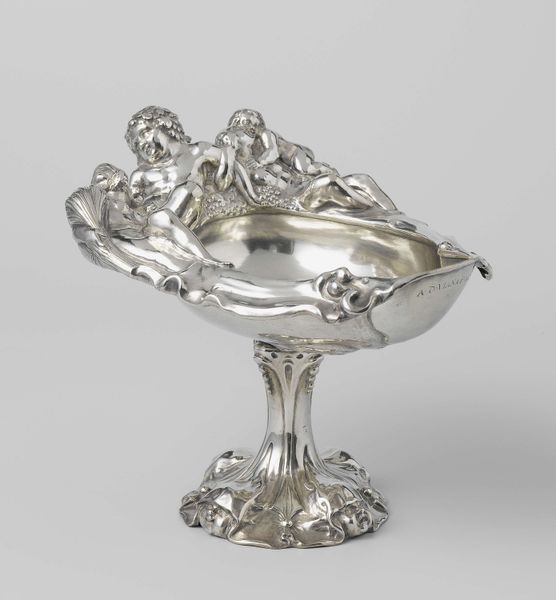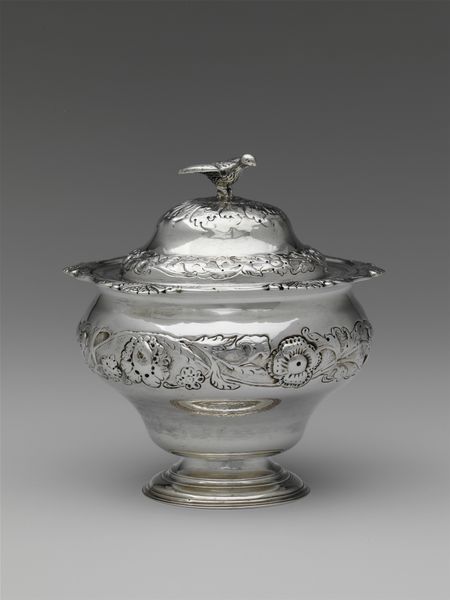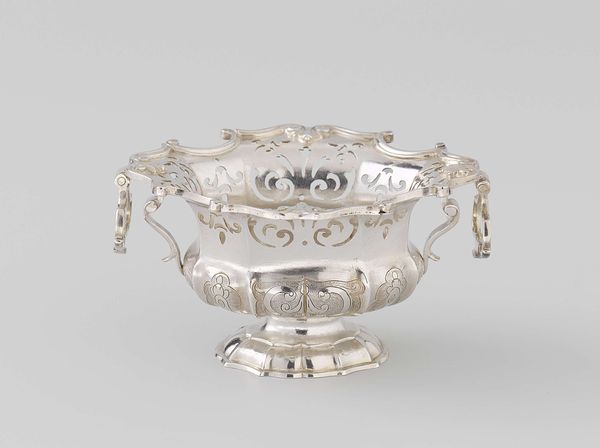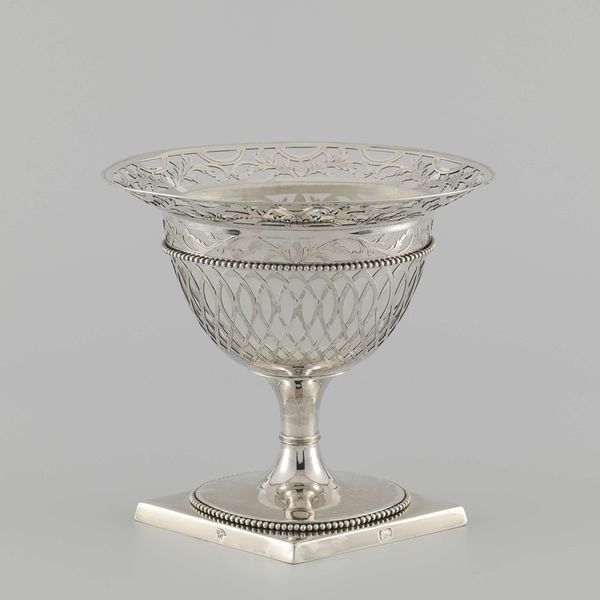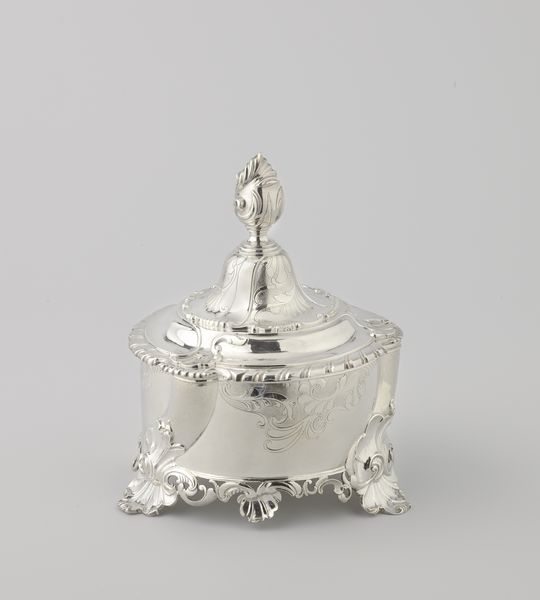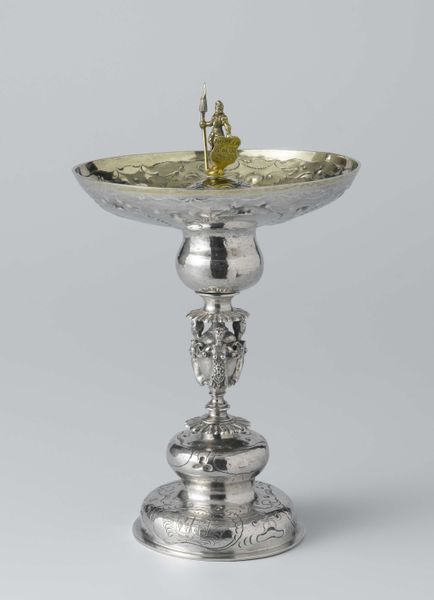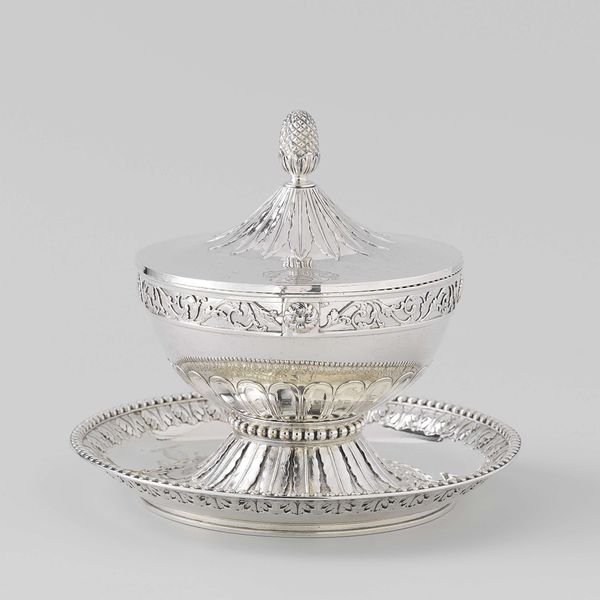
silver, metal, glass, sculpture
#
silver
#
metal
#
glass
#
vessel
#
sculpture
#
decorative-art
Dimensions: Diam. of vase: 28.3 × 30 cm (11 1/8 × 11 13/16 in.); 2763 g
Copyright: Public Domain
Editor: Here we have a "Centerpiece," made around 1880 by Dominick & Haff. It's constructed with silver, metal, and glass. I'm really struck by its regal, almost imposing feel, like it belongs in a palace. How do you interpret this work? Curator: That's a perceptive reaction! The opulence is certainly intentional. To me, this centerpiece speaks volumes about the socio-economic climate of the late 19th century. It’s an example of decorative art, reflecting the rise of industrial wealth and the desire to display status through elaborate objects. Think about the Victorian era, a period grappling with its own identity in terms of colonialism, class divisions, and gender roles. Do you see any symbols here that might relate to these ideas? Editor: I see what appear to be sphinxes holding up the glass vessel, are they symbolic? Curator: Exactly! The use of sphinxes reflects the Victorian fascination with Egypt and the exotic "Orient", which was a direct result of imperialistic expansion and the appropriation of other cultures. The object embodies power, both artistic and political, and also appropriation. Editor: So, it’s beautiful, but also a symbol of a complex, often exploitative history. Curator: Precisely. Its beauty masks the social dynamics that enabled its creation and informed its aesthetic. Looking at art through this lens, what do you now consider is your final perspective? Editor: It is important to remember the historical background. A stunning and complicated reflection of its time. Curator: Agreed, keeping that tension in mind transforms how we perceive not only this object, but also many others from this period.
Comments
No comments
Be the first to comment and join the conversation on the ultimate creative platform.

